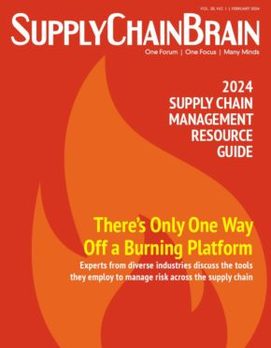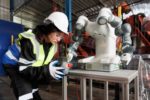
Home » Watch: Creative Ways to Alleviate Labor Shortages in the Warehouse
VIDEO
Watch: Creative Ways to Alleviate Labor Shortages in the Warehouse
March 31, 2022
Increased salaries may not be sufficient to attract warehouse talent, says Ken Ramoutar, chief marketing officer at Lucas Systems. Investment in technologies to make the work safer and more efficient is what's required.
Virtually every one of Ramoutar’s customers struggles with labor problems. Many hope that raising wages and designing better benefit packages will help them compete for a shrinking workforce.
In some cases, the labor shortage means customer commitments cannot be met. Temporary staff may be hired, but that requires retraining, and work quality often is below par. “The pain level is very high. The labor shortage is probably the number-one pain point right now in the industry.”
Yet throwing money at the problem isn’t helping in many instances, Ramoutar says. “I think you need to think about that problem a little bit differently now. What is it in my operations that's going to be attractive to a warehouse associate? What tools am I going to get that will make my job easier? How much travel am I going to have to do? Do I have to walk up and down this warehouse, maybe eight, 10 miles a day? Or do you have systems that minimize the amount of travel that I have to take? How safe is it here? Do you have technologies that make it safer for me to work there? There are technologies that make it easier for workers to do their jobs. And I think that's the competitive battlefront right now for labor.”
Ideally, an operator wants to attract and retain a younger workforce, Ramoutar says. But they have plenty of job choices. And companies won’t be competitive if they don’t invest in the technologies that make them feel safe and more comfortable.
RELATED CONTENT
RELATED VIDEOS
Related Directories
Subscribe to our Daily Newsletter!
Timely, incisive articles delivered directly to your inbox.
Popular Stories

2024 Supply Chain Management Resource Guide: There's Only One Way Off a Burning Platform
VIEW THE LATEST ISSUECase Studies
-
Recycled Tagging Fasteners: Small Changes Make a Big Impact
-

Enhancing High-Value Electronics Shipment Security with Tive's Real-Time Tracking
-

Moving Robots Site-to-Site
-
JLL Finds Perfect Warehouse Location, Leading to $15M Grant for Startup
-
Robots Speed Fulfillment to Help Apparel Company Scale for Growth



